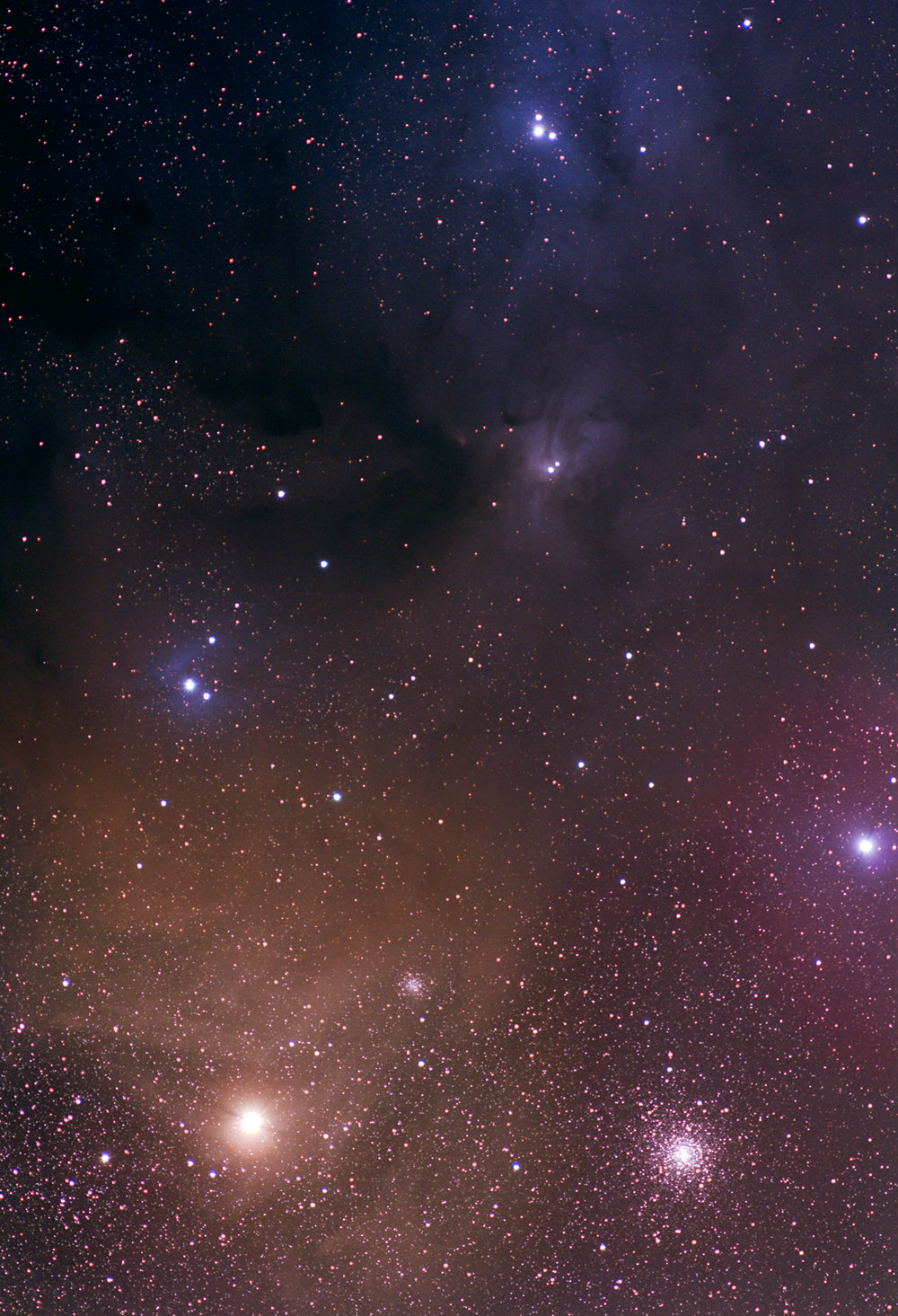 |
Antares Region in Scorpio and Ophiucus
 |
Copyright 2007 Hap Griffin
One of the most
colorful regions in the sky...the area around the bright star Antares in the
constellation of Sagittarius. While this region appears to be busy and
chaotic, it is actually quite spread out in three dimensions with each object
being at a different distance from us. The bright orange star at the lower
left is Antares...a class M supergiant. It is 700 times the diameter of
our sun...if it were placed at the center of our solar system, it's outer edges
would lie between the current orbits of Mars and Jupiter. It shines with a
total light output of 65,000 times that of our sun. Antares lies at a
distance of 604 light-years and its intense radiation illuminates the nebulosity
surrounding it. This is one of the very few instances of an orange nebula
anywhere in the sky. To the lower right is globular star cluster M4...a
grouping of thousands of stars in an area only 75 light-years in diameter and
lying at a distance of 7200 light-years. Just above and to the right of
Antares is another globular star cluster, NGC 6144, at a much greater distance
of 28,000 light-years. The two blue reflection nebulae, IC 4605 at the
middle left and the Rho Ophiuci nebula near the top, demonstrate how hydrogen
gas when reflecting light from embedded stars glows blue. The opposite
occurs in emission nebulae, such as the one surrounding the bright star at the
right side of the frame, where the hydrogen is excited into fluorescing and
glows red. The dark grayish blue area in the middle that resembles
an Iris is IC 4603. The very dark region that starts near the center and
exits the photo to the left is not just a region lacking stars...it's a huge
cloud of dense, dark dust that obscures our view of the stars beyond. As
it leaves this region to the east, it covers an area many times the extent of
this frame.
Date/Location:
May 14, 2007 Griffin/Hunter Observatory Bethune, SC
Instrument: Canon 350XT Digital SLR (modified) through Nikon
300mm F/4.5 lens
Focal Ratio: F/4.5
Guiding: None - piggybacked on Meade RCX-400 telescope
Conditions: Visually clear
Weather: 60 F
Exposure: 219 minutes total (73 x 3 minutes)
Filters: Baader UV/IR Block
Processing: Focused and captured with DSLRFocus.
RAW to TIFF conversion, auto-dark and flat frame calibration, Digital
Development, Richardson-Lucy deconvolution, resizing and JPEG conversion in
ImagesPlus. Color correction in Photoshop CS2.